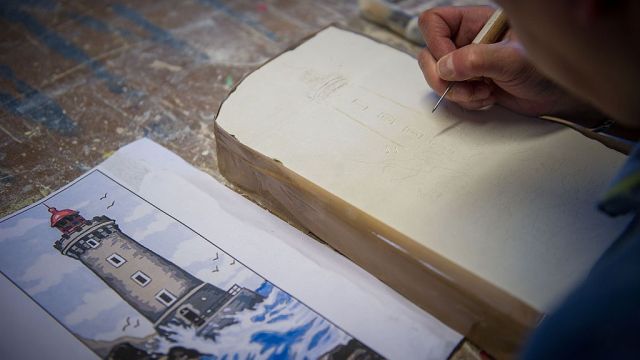Everything You Need to Know About Cavities – And Why They’re Nothing to Fear

Nobody likes sitting in a dentist’s chair, especially to have a cavity fixed. But why does that process take so long? Because fillings take forever to apply — and your mouth is more complicated than you think.
While your teeth are the hardest substance in your body, they’re not impervious to damage. Your mouth has up to 100 billion bacterial microbes in it every day. Most of them don’t affect your teeth. Some even protect them. But a small percentage of those bacteria combine with sugars to create acid. That acid breaks down the calcium, phosphate and other minerals that make up tooth enamel. “Enamel can repair itself by using minerals from saliva, and fluoride from toothpaste or other sources,” according to the National Institute of Dental and Craniofacial Research. “But if the tooth decay process continues, more minerals are lost [and] the enamel is weakened and destroyed, forming a cavity.”

When that happens, the only way to repair the damage is with a filling. A filling is a material that seals and disinfects the cavity. Fillings can be either an amalgam of metals like mercury, silver, tin and copper, or a tooth-colored composite made of plastic and glass. While amalgams do use mercury, it’s not dangerous: the toxic properties of mercury become inert when combined with the other minerals. Both filling types are equally safe and durable. The only real difference between the two is that amalgam fillings are cheaper and require more of the tooth to be removed.
Regardless of which type of filling you choose, the process for installing it is the same. Once you’re seated in the dentist’s chair, the dentist will place a cotton roll in your mouth near the infected tooth so they have room to work. They’ll also numb the tooth and the area around it, using either a gel or a small injection that will feel like a pinch. The dentist can also give you a small dose of nitrous oxide (laughing gas), if you’re thrilled about the shot. Either way, you have to wait a few minutes for the relaxing effects of either treatment to kick in before beginning treatment. That’s five minutes right there.
Then comes the part you’ve been dreading: the dentist using a small drill to remove all the decay from the cavity:
via GIPHY. Credit: Phoenix AZ Dentist/YouTube
That process is why dentists numb the area. Cavities often develop close to nerves in the gum line. Those nerves are incredibly sensitive, and given that dental drills rotate between 8,000 and 250,000 RPMs — up to 100 times faster than a home drill — you do not want them exposed during this procedure. Depending on the amount of oral damage, length of time it’s accumulated, and the size of the cavity, it could take your dentist anywhere from a few seconds to a few minutes to clean the entire area out. The sound of the drill might make your ears ring, but it should not hurt.
After the dentist has drilled the decay out of the cavity, they apply an adhesive to the area. The adhesive needs to be applied twice, once for an initial coating then once more after it dries to make sure the cavity is filled. Next, the dentist injects the filling into the cavity. They may make multiple passes to make sure they’ve got the whole area. All of those steps should take at most, a minute or two. Then, once the filling is injected, the dentist will use a thin tool to pack the filler material into the cavity to make sure there are no cracks or bubbles for bad bacteria to infect. That takes a few seconds and looks like this:
via GIPHY. Credit: Phoenix AZ Dentist/YouTube
Then the dentist uses a curing light to harden the material, which takes about 30 seconds depending on the filling. After the filling hardens, the dentist smoothes out any rough edges with a polishing tool, which can take a minute or two depending on the size of the filling. Lastly, the dentist has you bite down to make sure the filling is secure and you’re not uncomfortable. That takes a few seconds — unless something needs an adjustments, in which case they’ll need a few minutes to adjust it.
And that’s it! Your tooth is all patched up in 20 minutes and 12 easy steps. Here’s the whole process in two minutes:
Credit: DentalEdu/YouTube
Your jaw might be sore after holding it open for 20 minutes, but that should be the only pain you feel. Think of it this way: repairing a cavity is actually the best time to repair tooth decay. Cavities are much easier — and far less invasive, costly, and painful — to treat than more advanced kinds of tooth decay, like root canal damage. Nobody wants a root canal. Take care of your teeth before that happens. It’s quicker than you think.
Feature image credit: Mandy Jouan/Flickr





